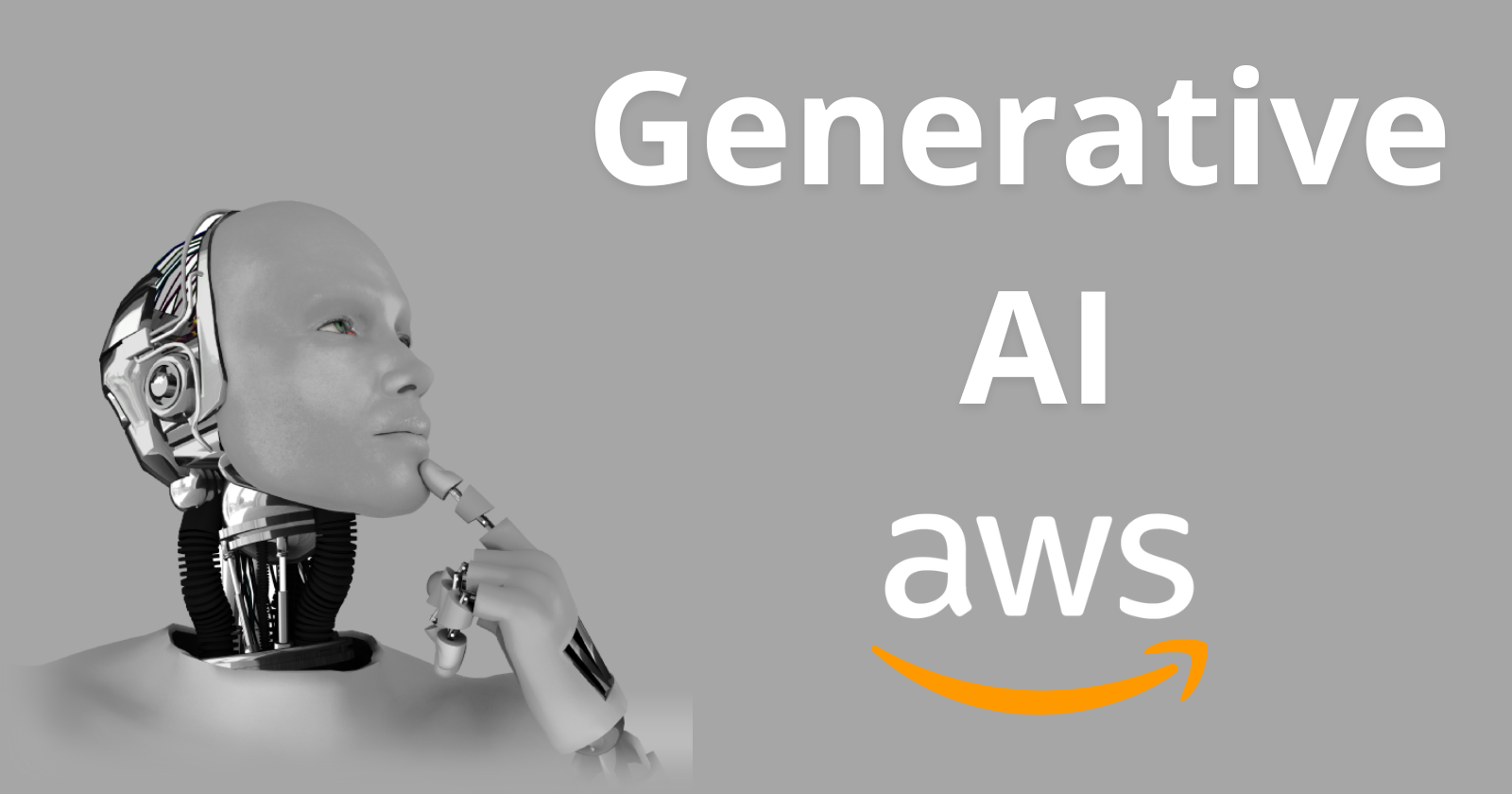AWS Generative AI: Revolutionizing Cloud Computing
 Nikunj Vaishnav
Nikunj Vaishnav

Hey there, tech enthusiasts! Today, let’s dive into one of the most exciting frontiers in the world of cloud computing—AWS Generative AI. If you’re passionate about cloud technologies and artificial intelligence, this post is for you. Let’s break it down step by step, shall we?
1. What is Generative AI?
Generative AI refers to algorithms (like GPT-3) that can generate new content—text, images, music, etc.—by learning from a large dataset. Instead of simply analyzing and processing data, these AI models create new data based on the patterns they’ve learned.
2. Why AWS for Generative AI?
AWS (Amazon Web Services) provides a robust and scalable platform for deploying and managing AI models. With its powerful infrastructure, extensive AI services, and vast ecosystem, AWS is an ideal choice for harnessing the potential of generative AI.
3. AWS Services for Generative AI
AWS offers several services that make it easier to build, train, and deploy generative AI models. Here are the key ones:
Amazon SageMaker: This is the go-to service for building, training, and deploying machine learning models at scale. SageMaker provides built-in algorithms, managed Jupyter notebooks, and auto-scaling capabilities.
AWS Lambda: For running code without provisioning or managing servers. It’s perfect for deploying AI models that need to scale automatically with incoming requests.
Amazon S3: Secure, scalable, and durable storage for the large datasets required to train generative AI models.
AWS Deep Learning AMIs: Pre-configured with popular deep learning frameworks, these Amazon Machine Images provide a quick start for training models on powerful EC2 instances.
4. Steps to Implement Generative AI on AWS
Step 1: Setting Up Your Environment
Create an AWS Account: If you don’t already have one, sign up for an AWS account.
Set Up IAM Roles: Ensure you have the necessary permissions for SageMaker, S3, and other services.
Launch a SageMaker Notebook Instance: This will be your primary environment for developing and training your models.
Step 2: Data Preparation
Collect Data: Gather the data you need for training your generative AI model. This could be text, images, or any other type of data.
Store Data in S3: Upload your data to an S3 bucket for easy access during training.
Step 3: Model Training
Choose a Pre-trained Model or Start from Scratch: Depending on your use case, you can use pre-trained models available in AWS or train your own from scratch.
Configure Training Jobs in SageMaker: Define your training parameters, select the right instance type, and start your training job.
Monitor Training Progress: Use SageMaker’s built-in tools to track the progress and performance of your model.
Step 4: Model Deployment
Create a SageMaker Endpoint: Once training is complete, deploy your model to a SageMaker endpoint for real-time inference.
Integrate with Your Application: Use AWS Lambda, API Gateway, or other services to integrate your AI model with your applications.
Step 5: Continuous Monitoring and Optimization
Monitor Model Performance: Continuously track the performance of your deployed model using CloudWatch and other monitoring tools.
Retrain and Update Models: Regularly update your models with new data to improve accuracy and performance.
5. Real-world Applications of AWS Generative AI
Generative AI on AWS is being used across various industries for innovative applications:
Content Creation: Automatically generating articles, blog posts, and social media content.
Design and Art: Creating unique artwork, designs, and digital content.
Music and Audio: Composing music and generating sound effects.
Customer Support: Developing sophisticated chatbots and virtual assistants.
6. Getting Started with AWS Generative AI
If you’re ready to dive into the world of generative AI with AWS, here are a few resources to get you started:
AWS Training and Certification: Take advantage of AWS’s training programs to build your skills.
AWS Documentation and Tutorials: Explore the comprehensive documentation and step-by-step tutorials.
AWS Community and Forums: Join the AWS community to connect with other AI enthusiasts and experts.
Source from AWS
Conclusion
AWS Generative AI is transforming the landscape of cloud computing and artificial intelligence. With the right tools and resources, you can create innovative AI-driven applications that push the boundaries of what’s possible. So, what are you waiting for? Start exploring AWS Generative AI today and unleash your creativity!
Thanks for reading. Happy Learning !!
Connect and Follow Me On Socials :
Like👍 | Share📲 | Comment💭
Subscribe to my newsletter
Read articles from Nikunj Vaishnav directly inside your inbox. Subscribe to the newsletter, and don't miss out.
Written by

Nikunj Vaishnav
Nikunj Vaishnav
👋 Hi there! I'm Nikunj Vaishnav, a passionate QA engineer Cloud, and DevOps. I thrive on exploring new technologies and sharing my journey through code. From designing cloud infrastructures to ensuring software quality, I'm deeply involved in CI/CD pipelines, automated testing, and containerization with Docker. I'm always eager to grow in the ever-evolving fields of Software Testing, Cloud and DevOps. My goal is to simplify complex concepts, offer practical tips on automation and testing, and inspire others in the tech community. Let's connect, learn, and build high-quality software together! 📝 Check out my blog for tutorials and insights on cloud infrastructure, QA best practices, and DevOps. Feel free to reach out – I’m always open to discussions, collaborations, and feedback!